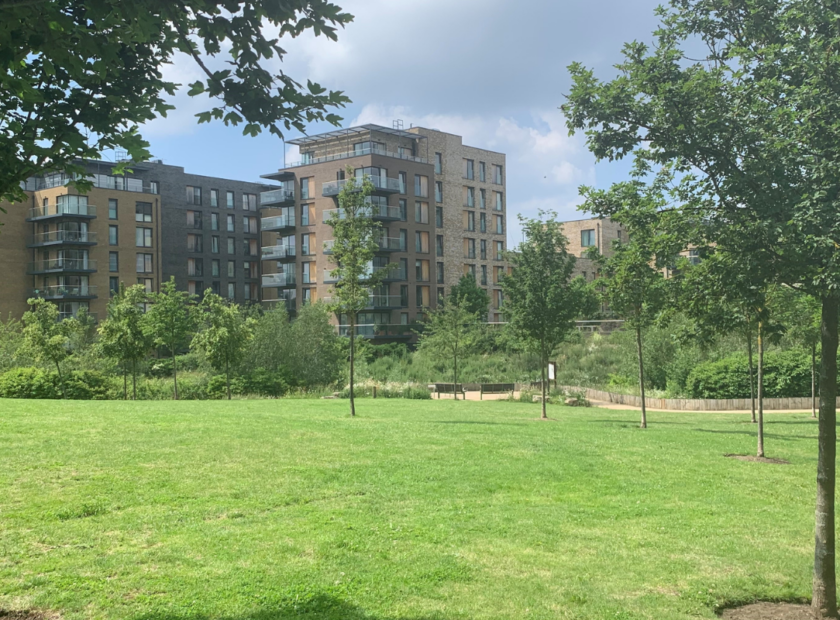The government has now announced its major expansion of the permitted development regime. These changes radically relax the use class order, allow for the demolition and rebuild of buildings, and allow for two storey extensions to homes, all without the need for full planning permission. This blog is not intended as a technical analysis of these measures but instead to unpick what the announcement might mean for the proposals to radically reform the system, which were promised by the end of July.
The context of the new expansion of permitted development is important. Permitted development effectively gives approval in principle of categories of development which then do not require full planning permission. It was originally used for minor developments with little or no impact on the wider community. It was rapidly expanded after 2013 as an emergency measure so that offices and other commercial premises could be converted into residential use with minimal safeguards. Local authorities could consider flood risk and transport issues but could not consider the wider bundle of vital issues on design and location. At the time many thought that building regulations would provide some minimal safeguards. This proved false because building regulations do not contain important standards on, for example, space or air pollution and do not deal with the wider location and social facilities need to support housing development.
After years of intense campaigning the government finally conceded that access to natural light was important to people’s well-being and this consideration has been added to the permitted development regime. The fact this battle had to be fought so that people could have a window in their home reflects just how far we have fallen in the debate on what makes a decent home.
The new expansion of permitted development does create a longer list of considerations before developers can use their new development rights such as noise and design. But two points are vital:
- The considerations that do apply like flood risk do not operate in the same way as they would for new development requiring full timing permission. The effective transition of an industrial estate into a housing estate would not require the application of the sequential test or the exceptions test for flood risk. This is simply because the principle that development should take place has already been established. It is also totally unclear how much weight concerns about good design will carry or how this might link to policies about design at the national, local or neighbourhood level.
- This list of standards does not include basic issues such as access to social facilities like shops and play space nor consideration of air pollution or the carbon profile of these new housing units It is major setback to the vital goal of zero carbon development.
Despite some caveats being included in the prior approval process, the effect of this suite of changes will be that local authorities will, I believe, find it very hard to refuse the demolition of commercial building and the rebuild of a residential block in industrial estate even when its location is holy unsuitable to providing a decent life for its residents. Because the principle of development has been approved by central government the balance of power has shifted decisively away from local authorities and the wider public interest. For example, it will hard to produce any positive local plan or neighbourhood plan strategy for healthy living when most of what is developed completely bypasses development plan policy.
The first major conclusion from these announcements is that the government is not listening. The original consultation for these general ideas did not receive a favourable response and the detail of the way the measures have now been implemented was never been the subject of public consultation. The measures were laid in secondary legislation the day before parliamentary recess and are due to come into force on 31st August.
But worse than that, the government’s commissioned, independent research report into the impacts of permitted development was clear that the existing system was producing very poor-quality results. The research concluded, for example, that:
“Permitted development conversions do seem to create worse quality residential environments than planning permission conversions in relation to a number of factors widely linked to the health, wellbeing and quality of life of future occupiers.”
It is bitterly ironic that this report was published on the same day that government radically expanded the scope of this failed policy. The Raynsford Review was very clear six months ago that the expansion of permitted development was a shameful policy which had resulted in 21st century slums.
Taken together the weight of concern in the planning sector, amongst local government and in the government’s own analysis of the impact of the policy have had little or no effect on this week’s announcements. Whatever emerges in the next round of proposals for radical planning reform, due by the end of July, it’s unlikely to be evidence based. In fact, the announcements on the expansion of permitted development illustrate an assault on three important ideas:
Democracy
Expanding permitted development clearly undermines democratic planning both in terms of the role of local government in creating decisions which are accountable and in the direct voice of communities in the planning process. Given the breadth and scope of permitted development it is important to ask what control the average urban planning authority has over the future of its community? Since the vast majority of development in such areas relates to change of use and conversions these planning authorities have been comprehensively hollowed out. This amounts to an enormous centralising of planning power and marginalisation of local democratic control.
There is a fascinating paradox here surrounding the government desire for a new round of devolution settlements this autumn while removing the critical powers local authorities need to regenerate and shape their own future. As an exercise it’s worth walking around your town and then adding up the amount of development that can now take place with no local democratic scrutiny. Why bother with a Neighbourhood plan when it has no effective control over the urban environment? The voice of communities is now completely excluded from these processes.
Zonal planning
The second issue is the way that the governments expansion of permitted development reveals their intended model of zonal or codified planning which has been rumoured to be at the heart of their new radical proposals. We can see how their commitment to the idea that permission can be granted in principle for development will be implemented and we can see their vision of the kinds of codified standards that would shape this development. We now know that the Governments view of these standards will be ‘light touch’, ‘streamlined’ and judging by the evidence of the announcement this week, incapable of protecting people’s health and well-being or tackling the climate crisis. The most radical change since the Second World War won’t give us a Netherlands style zonal planning system, it will give us no system at all. It seems that the agenda is not to improve the system but simply to extinguish it in favour of a minimalist permitting regime.
Planning is not the problem.
The final lesson is a familiar one and that is that government continues to believe that democratic planning and local government are the key problems to the regeneration of our town centres. There is no evidence of this and no evidence at all that these measures will solve the crisis of our town centres. In fact, the success of town centres depends on effective planning and detailed management, it depends on involving communities to build on the identity of places, not making changes despite local residents, it depends on a shared vision and the coordination of investment with councils playing the leading role in land assembly and de-risking development. Change is of course needed, but local government and local communities are best placed to determine what change is needed and how those changes operate. Having been stripped of those powers the full responsibility for the future chaotic management of our town centres now lies with national government.
The government has argued these changes will revitalise our town centres. But really the vision set out by the government in its expansion of permitted development is a vision of children playing in car parks, of people housed on industrial estates lacking all the basic facilities. It’s a vision which disregards our commitments to climate change and marginalises local democracy. It will fail because ultimately people won’t accept losing control over their own places. But if we are to achieve the humane and democratic planning we need then everyone must now speak with much louder voices. Local Government must be unified in its resistance to the removal of its powers, planners should resist any PDR application that damages people’s health and well-being.




